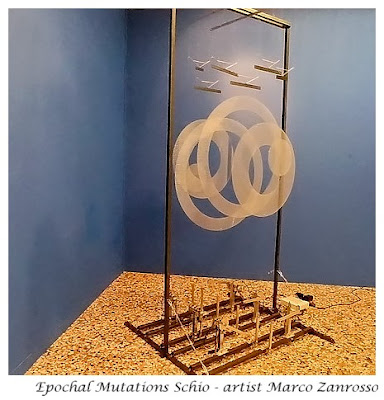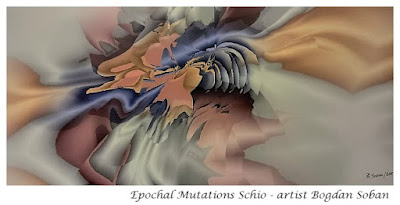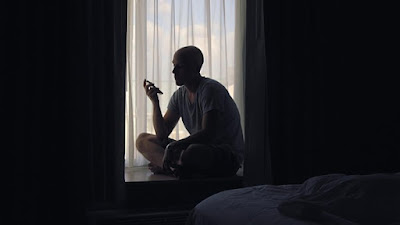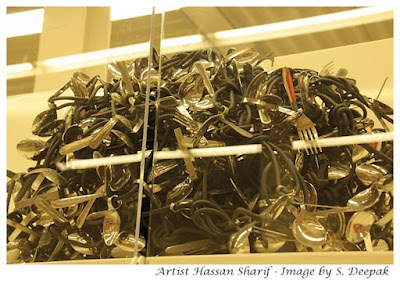"Papermade" is the biennial art exhibition focusing on paper-art held in Schio (VI) in the Veneto region of Italy. The 5th Papermade is going on now and can be visited on weekends and holidays till the end of February 2022. I love the idea of paper-art and I think that this years' exhibition has managed to bring together some great art works and is probably the best Papermade Art Exhibition so far! The exhibition is being held at Palazzo Fogazzaro in the city centre of Schio. (Click on the images for a bigger view)
Different Italian cities hold art biennales, the most famous being the Venice biennale. Other art biennales are held in Florence, Milan, Rome and Salerno. Compared to those bigger cities, the biennale of Schio is smaller with about 80-100 art works but it is also unique in this region as it focuses only on paper art. Some other well known Paper-Art Biennales include the ones in Lucca (Italy), Shanghai (China) and Nantou (Taiwan).
I had started this post thinking that I will choose my favourite 10 art-works but there were just too many that I did not wish to leave out of this post. So in the end, I have chosen 20 (but I could have easily added another 10). Therefore, it is a long post with a lot of pictures. If you are one of the artists in the exhibition and you wish to get some pictures of your artwork, do let me know and I will be happy to send them to you.
Anita Gratzer
Sculptures by Carlo Pasini & Thomas Ashley
Papermade-5 has a few works of Thomas Ashley. In one exhibit his work on Linocut print forms the background to a very striking wounded tiger in cardboard and mixed materials by Carlo Pasini, which occupies a place of pride in the entrance hall of the exhibition. Pasini's tiger lies with its tummy up, in a vulnerable position, over an intricate linocut by Ashley. The tiger has pieces of glass embedded in its body as if it had tried to jump over a wall lined with broken glass, and thus had got hurt. It also has numerous needles sticking out of its body, as if someone wanted to use it as a kind of voodoo doll. The tiger sculpture is titled "Scoprimi tutta" (Discover or uncover me completely) but I prefer to call it The Wounded Tiger. For me it symbolised the climate and the nature crisis.Paper Saloon by Alicia Olaya Rodriguez
The art-work by the Spanish artist is a big installation composed of different pieces of furniture, lamp, bracelets and the bust of a woman covered with curly hair, all made from folded paper. This installation is spread over 2 rooms in the exhibition. It is striking because it represents a huge amount of work and an inventive use of paper for the expression of beauty. It seems to show the riches of a noble family and the use of the paper seems to represent the transient nature of fame and wealth.Lost Keys of Claudio Onorato
Italian artist Claudio Onorato, based in Milan, also has a few very complex works in the exhibition. The image below shows part of an art work called "I have lost the keys to my house". It is made from black-paper with pencil design and a humungous amount of detailed paper-cutting. I think that it is an example of taking paper-cutting as an extreme art-form. The impact is very striking and fascinating. Claudio expresses his resistance to inequalities and cruelties in the world through creating works in which empty spaces, air and light are as important as the paper.Wallflowers by Linda Rademan
Linda Rademan is an artist from South Africa. Her art work in Papermade-5 is very special - it is made on a large number of tea-bags, which have been sewn together to form the surface on which she has used dry-point and embroidery to show old images of girls. The image below has a close-up of a part of this work. She is based in Johannesburg and she likes to explore Afrikaner female identity through her works.Thinking about this subject made me reflect about so many other factors which influence our perceptions about art and artists, which do not have much to do with the artistic worth of the individuals. I remember similar considerations while choosing the awards for documentary films when I was part of a jury for a film festival in Italy some years ago. We make a great show of objectivity and fair-play but it is not easy to avoid our prejudices. I can imagine that it may not be easy for Rademan to be known as an artist focusing on the Afrikaner female identity.
Protection Suit by Alexio Berto
Italian artist Alexio Berto's sculpture of a man wrapped in a white partially transparent tissue protection suit filled with recycled papers is one of the most explicit references to the on-going Covid-19 pandemic in this exhibition. Most of us must have seen figures dressed in those clothes in the hospitals or at least on the TV screens.Technique by Giorgio Tentolini
The installation by the Italian artist Giorgio Tentolini has paper-cuttings of huge digital prints of faces. The long stripes of papers in multiple layers move up and down and the faces can be seen only from a distance. I thought that this work expressed the enormity of cosmos and the huge distances between the particles in the atomic world - the closer we go, the lesser we can see and the patterns become clear only from the right distance. The faces disappearing in the stripes also reminded of faces hidden behind veils and how veils can splinter us in pieces, hiding us, protecting us but also killing us in a way, or at least stopping us from living fully by interfering in our interactions with others. I am not sure how Giorgio Tentolini would feel about my interpretations about the significance of this work.The Happiness I Can't Say by Maikel Domingues
This giant art installation by the American artist of Cuban origins, Maikel Dominguez, occupied a large part of the central hall of Palazzo Fogazzaro. It included a white crystal/resin bunny statue (it did not look like made from paper) placed at the end of a long beautiful carpet, as well as pink tiles with paper figures of more bunnies riding deer on one of the walls. The central bunny sculpture made of numerous white flowers, reminded me of some of the works of the Chinese artist Ai Wei Wei. At the same time, Maikel's the choice of the bunny-figures riding on the deer on the wall-tiles, also reminded me of the Tele-Tubbies, a children's TV programme.Atlas of Fear by Krisimaria Toronen
Finnish artist Krisimaria Toronen had a site specific installation in the toilet of Palazzo Fogazzaro. The art-work included strips of paper and hand-written chains of words growing like a creeper along the walls of the different rooms. The words could have been the DNA of the Corona virus. The most obvious meaning of the installation was the fear of the pandemic, highlighted by locating it in a toilet, which is often seen as the origin of diseases. Normally, modern toilets are all gleaming and clean tiles and seeing them covered with the ants like words was disturbing.The Adults by Silvia Mei
Silvia is an Italian artist and her work in the exhibition had a brightly coloured painting of people with disturbing faces. I guess she was showing the masks which we carry in the world for hiding our real feelings. The painting was very striking, and while I could appreciate it, I don't think that I would like it in my bedroom.Psuedobombax Grandiflorum by Margherita Leoni
Italian artist Margherita Leoni had a water-colour painting in this exhibition. Though very simple, I liked the hyper-realism of the flowers and leaves in it. She is known for her beautiful botanical water-colours and she also runs training courses on this theme. If she was based in Schio, I would have loved to join Leoni's water-colours learning classes.The Night Before The Arrival Of The Barbarians by Kristina Pirkovic
Serbian artist Kristina Pirkovic had a big painting covering one wall of the exhibition rooms. Divided into panels, it probably represented rooms or houses with the parallel lives of people living inside them. Though, the title of the painting was "before the arrival of the barbarians", the people it showed were not particularly happy - actually most of them looked anguished, some seemed to be sick while others had their heads cut-off. There were some animals scattered between them and a sad-looking church with a graveyard in one of the panels. If this was their condition before the barbarians had arrived, what happened after their arrival? A massacre? It was again a very striking and disturbing art work, which I could appreciate but would not like to have it in my bedroom.Mare Nostrum by Gianfranco Gentile
Gianfranco Gentile is known for his artworks infused with social consciousness. He often uses waste materials like card-board boxes used for packaging, in his art. For Papermade-5, he has a site-specific installation covering one of the pillars in the entrance of Palazzo Fogazzaro. The pillar was covered with cardboard and had collages of fishes, waves, boats and immigrants, trying to cross "Mare Nostrum" (our sea), clearly referring to the immigrant boats from Africa which try to reach Italy and Europe. Unfortunately, the image below does not give a good idea of this work.Oversight by Art Werger
This artwork by the American artist Art Werger had etching with aquatint prints. It showed an image as if seen through a drone with black eagles flying above the houses. It had hyper-realism with a 3D like effect, which was very nice. Werger is a professor of Printmaking at the University of Ohio and has received a lot of awards for his works.I wondered if Art is his real name? If yes, his parents must have been artist or at least art lovers, who had wanted their child to become an artist. That makes me thinks of Nietzsche's famous poem about children being the arrows that God launches through us, and I wonder if Art had not wished to be an artist and instead, wanted to be an accountant or an astronomer, how would he have felt about his name?






























































